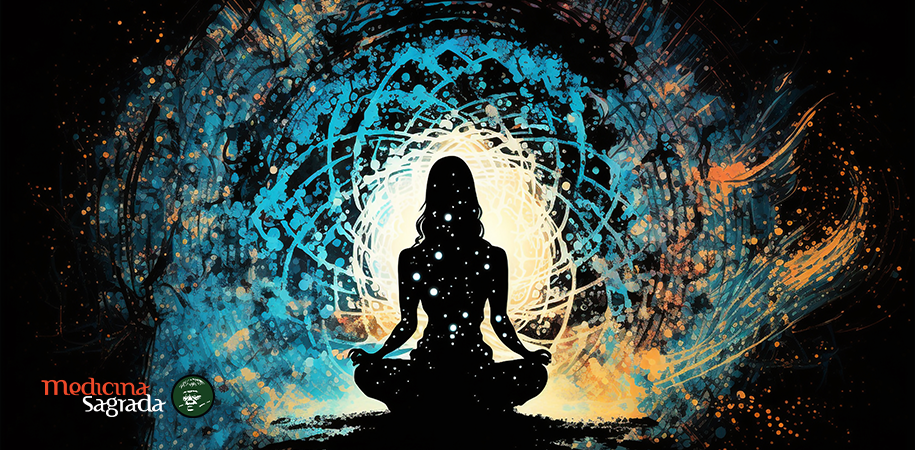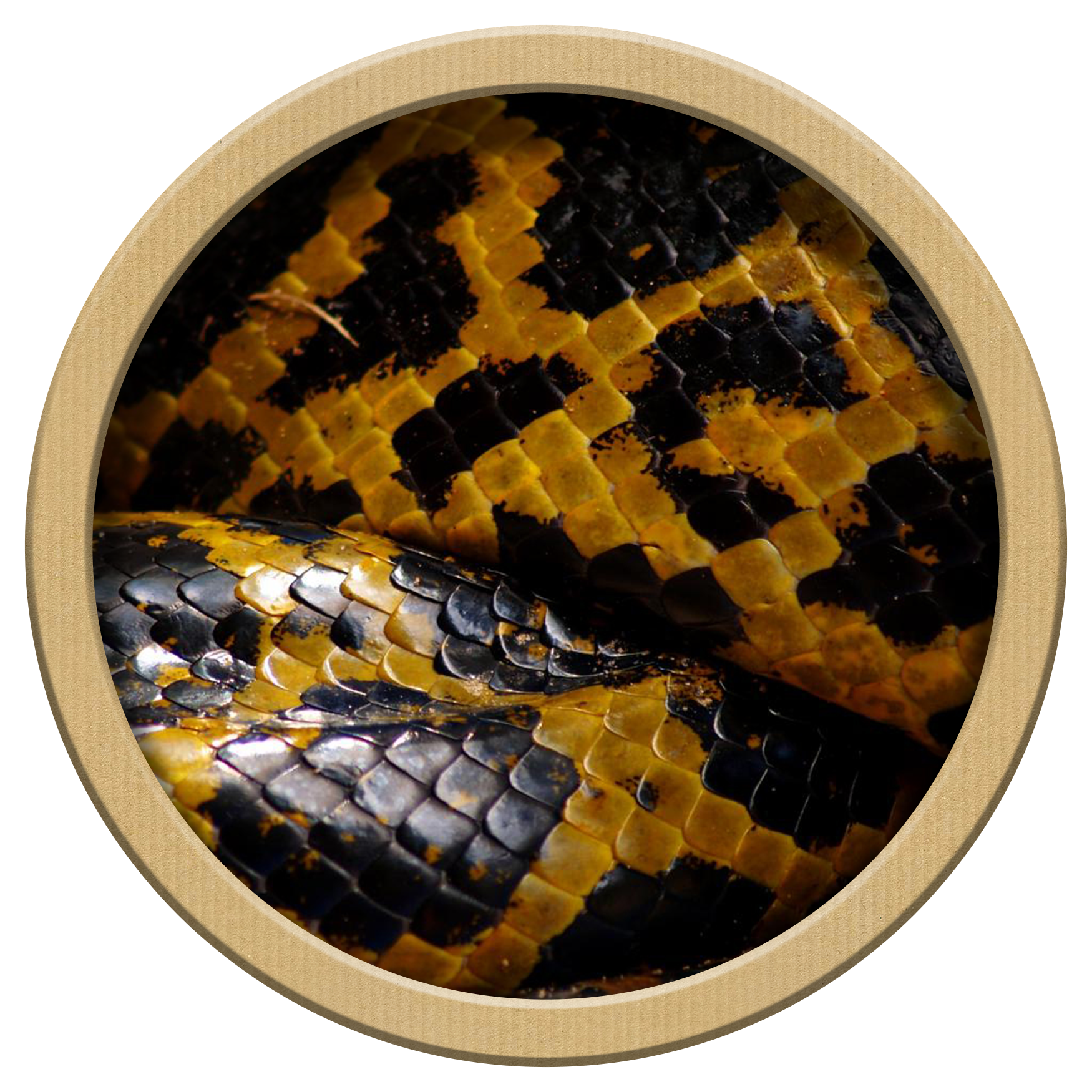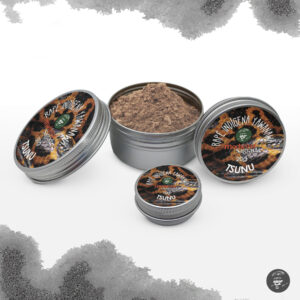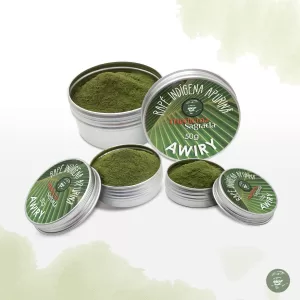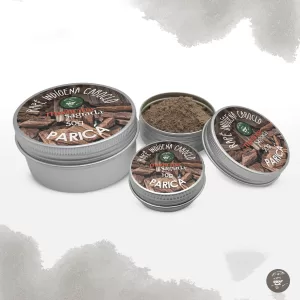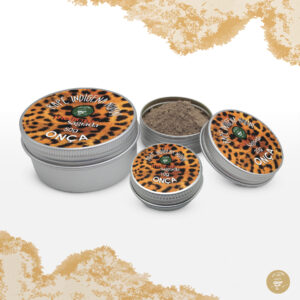O QUE É RAPÉ, ONDE COMPRAR E TODOS OS SEUS BENEFÍCIOS?
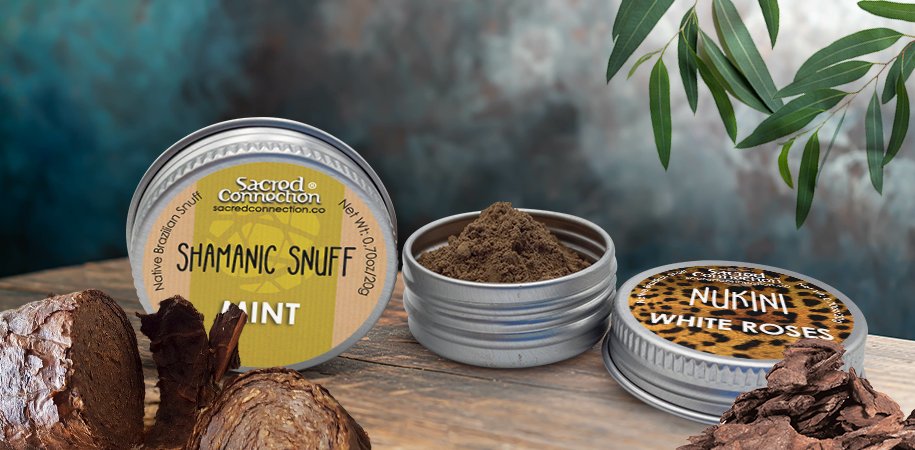
O que é o rapé?
Um pó fino que combina mapacho (um tipo específico de tabaco diferente do utilizado em cigarros comuns e muito mais forte também) e cinzas de várias plantas com outras ervas medicinais e sagradas, o rapé é tanto um rapé que une propriedades medicinais e aspectos espirituais, como também uma parte integral e sagrada das culturas de certas tribos brasileiras. O ritual que envolve o processo de criar a mistura ou blend de rapé é muito sagrado, requerendo tempo e esforço de xamãs experientes, assim como um profundo entendimento de cada componente, além de reverência e gratidão.
Embora seu ingrediente principal seja o tabaco, os blends de rapé também contêm componentes como cinzas alcalinas de outras plantas, fava tonka, botões de cravo, cascas de árvores, sementes e folhas; o que é incluído na mistura varia de acordo com as intenções da cerimônia, bem como as tradições e cultura das tribos, cuja receita é transmitida através das gerações. A força do rapé dependerá diretamente de seus ingredientes – alguns blends até mesmo não contêm tabaco, mas esses não evocarão os mesmos efeitos de purificação e enraizamento de outros rapés.

Para que serve o rapé?
O rapé é parte essencial das práticas sagradas e medicinais de várias tribos sul-americanas, reverenciadas com respeito e compreensão tanto dos aspectos físicos quanto etéreos e dos efeitos que seguem a cerimônia do rapé. Considerando que existe uma possibilidade infinita de combinações de ingredientes para as misturas de rapé, além do fato de que cada usuário definirá suas próprias intenções para o ritual, também é seguro supor que existem igualmente tantas finalidades para o uso do rapé – limpeza de energia, aumento da imunidade, indução de visões, conexão consigo mesmo, com a Terra e com os outros que participam do rito sagrado, no tratamento de certos problemas respiratórios ou digestivos, em busca de mais clareza e respostas a perguntas, aprimorando os sentidos e muito mais.
A frequência de uso pode variar dependendo da tribo e das práticas, e o tabaco sagrado pode ser usado como parte de ritos coletivos onde o rapé é compartilhado, e como parte de práticas pessoais e individuais de limpeza e cura, variando muito desde a má prática e uso indevido de tabaco, muitas vezes vemos e correlacionamos com fumar um cigarro atrás do outro.
Para que serve o rapé?
O rapé é parte essencial das práticas sagradas e medicinais de várias tribos sul-americanas, reverenciadas com respeito e compreensão tanto dos aspectos físicos quanto etéreos e dos efeitos que seguem a cerimônia do rapé. Considerando que existe uma possibilidade infinita de combinações de ingredientes para as misturas de rapé, além do fato de que cada usuário definirá suas próprias intenções para o ritual, também é seguro supor que existem igualmente tantas finalidades para o uso do rapé – limpeza de energia, aumento da imunidade, indução de visões, conexão consigo mesmo, com a Terra e com os outros que participam do rito sagrado, no tratamento de certos problemas respiratórios ou digestivos, em busca de mais clareza e respostas a perguntas, aprimorando os sentidos e muito mais.
A frequência de uso pode variar dependendo da tribo e das práticas, e o tabaco sagrado pode ser usado como parte de ritos coletivos onde o rapé é compartilhado, e como parte de práticas pessoais e individuais de limpeza e cura, variando muito desde a má prática e uso indevido de tabaco, muitas vezes vemos e correlacionamos com fumar um cigarro atrás do outro.
How to use rapé
Some people might assume, due to the fact that rapé contains tobacco, that you should smoke the snuff. Because the powder is so fine, having the ingredients been pounded in a mortar and pestle, then passed time and time again through a fine cloth, it would be quite difficult to smoke it. The correct way to take rapé is to have it administered into your nose, as part of a ceremony (that may well be followed by other practices, too). Firstly and most importantly, it is essential that the people interested in making use of medicinal tobacco, be it through the use of rapé, should dedicate time into understanding its purpose and cultural significance, as well as having an educated view of the ceremony and using it with respect and thoughtfulness. It takes years of apprenticeship for shamans to learn how to make their tribe’s rapé, the administration of the snuff, and the rituals.
Now, to more technical details. While rapé enters the body through the nose, it shouldn’t be snorted or simply inhaled. Instead, a pea-sized amount of the blend is scooped into a rapé applicator, or a pipe, and blown into the subject’s nose; it is important to try and “hold in” the rapé for a few instants before blowing it out again – which is a process that will most likely happen naturally, too. Usually, it is easier to have an experienced practitioner or shaman blow on the pipe (in this instance, called a tepi pipe, which is more elongated) and drive the rapé into the other’s nostrils; those who have already experienced the ceremony other times and are accustomed with the practice might prefer a personal pipe, or a kuripe, which is shaped in a V-angle so the snuff can be blown from one person’s mouth into their own nose. It is important that both sides receive the rapé to achieve balance between the things one desires to let go and what they wish to receive and welcome, or the whole process might slightly backfire – fear and rejection of part of the ritual might be considered as rejecting the spirit of the rapé.
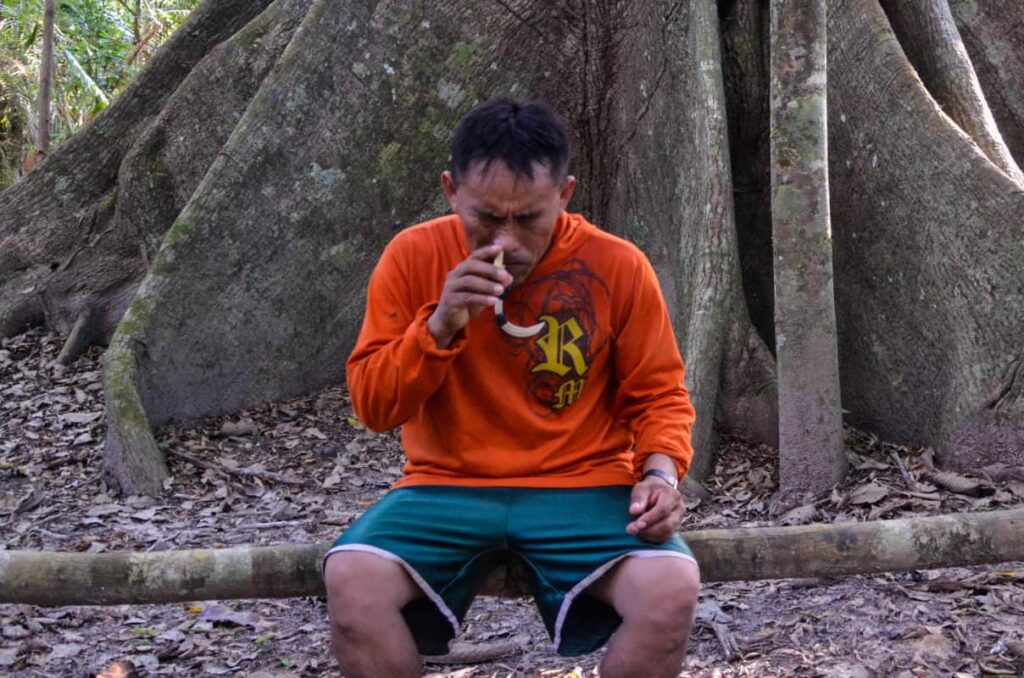

Discover the brazilian tribes that make rapé
There is a multitude of Brazilian tribes that traditionally make use of the rapé snuff, creating and passing down from generation to generation their own distinct blends of rapé and rites that make use of this shamanic medicine - and to name only a few, there are the Yawanawa, the Apurinã, the Kuntanawa, the Huni Kuin, and the Nukini. Not only do the blends of snuff and the ceremonies vary, but also the very act of creating the mixture can be distinct: the techniques, the tools, the choice of herbs, and even the songs sung in the process are unique to each tribe and sometimes occasion, which results in a very particular energy for each sort of rapé.
Discover the brazilian tribes that make rapé
There is a multitude of Brazilian tribes that traditionally make use of the rapé snuff, creating and passing down from generation to generation their own distinct blends of rapé and rites that make use of this shamanic medicine - and to name only a few, there are the Yawanawa, the Apurinã, the Kuntanawa, the Huni Kuin, and the Nukini. Not only do the blends of snuff and the ceremonies vary, but also the very act of creating the mixture can be distinct: the techniques, the tools, the choice of herbs, and even the songs sung in the process are unique to each tribe and sometimes occasion, which results in a very particular energy for each sort of rapé.
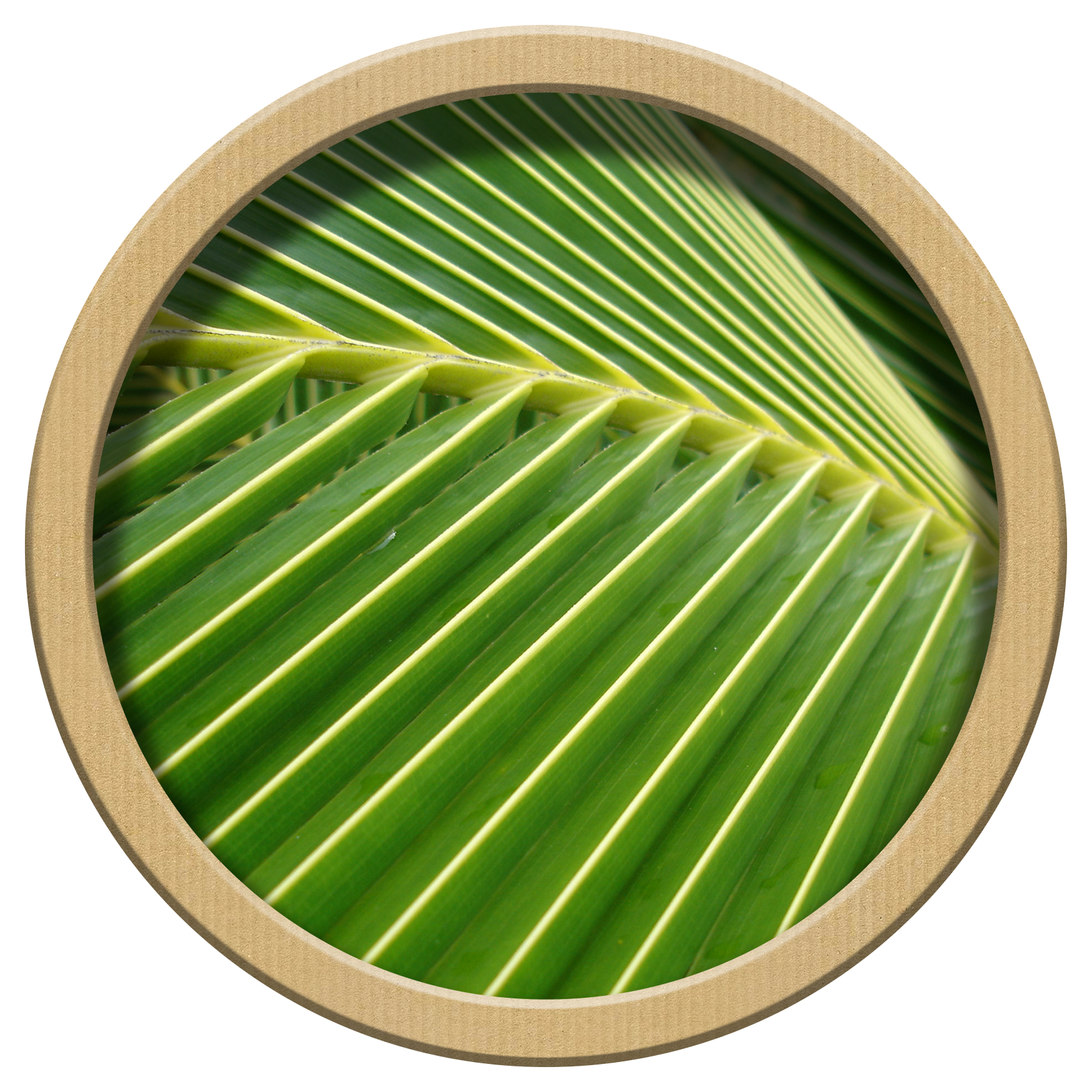
Apurinã
Their Rapé is the famous green Rapé so typical to their tradition, made with the local herb called Awiry...
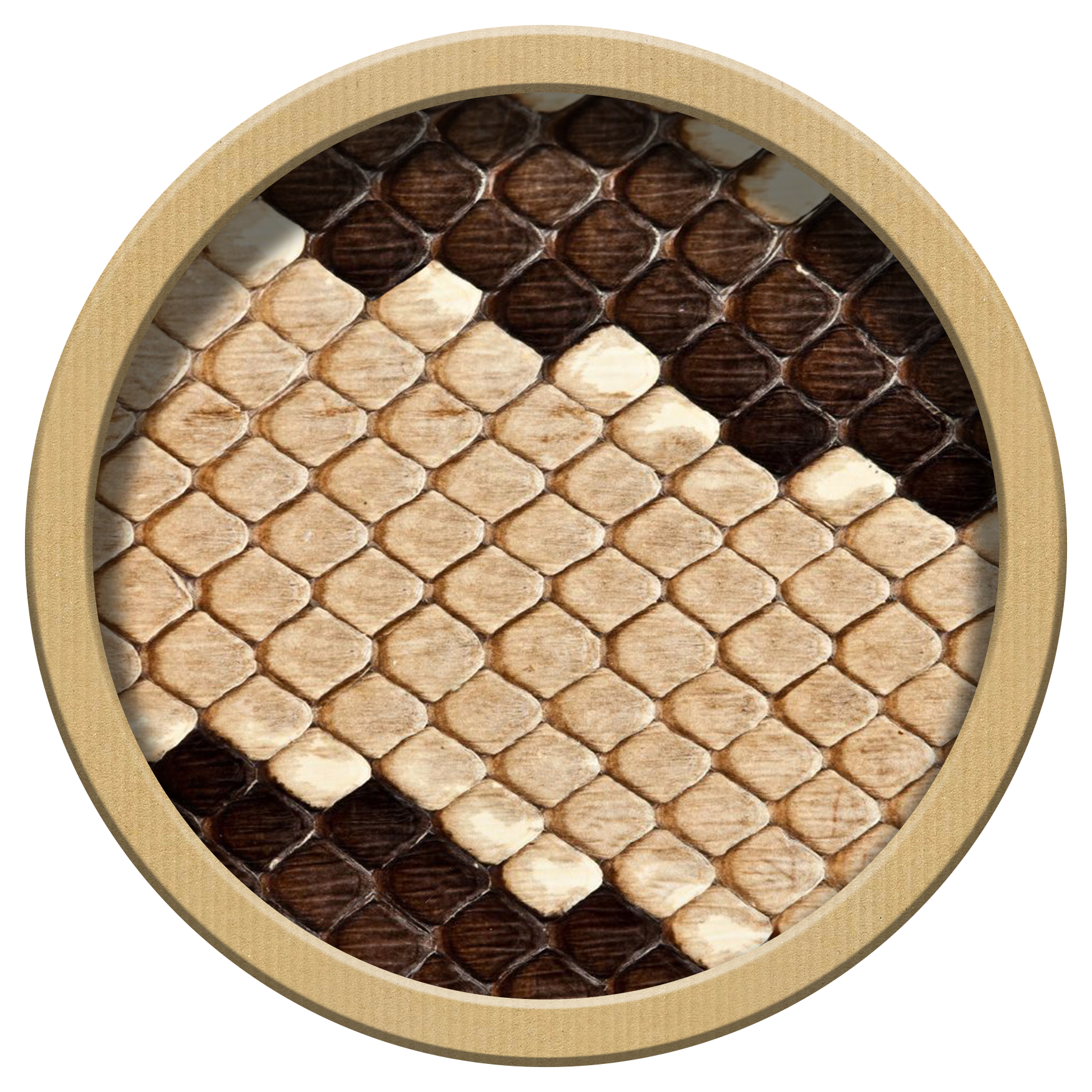
Huni Kuin
The name Huni Kuin means the True People but they are more commonly known as the Kaxinawa...
Types of rapé
There is a wide variety of rapé snuffs, equally diverse and unique as the tribes that create the blends. The name of each shamanic rapé will usually be composed of the name of the tribe of its origins, and sometimes even the name of the shaman who devised it, and sometimes it’ll reference some of the components of the blends. There are tribal snuffs, blended options, ceremonial rapé, and even tobacco-free alternatives. Certain blends will be more adequate for beginner users, while others might be more often used by those who have grown accustomed to its use; some powders will exhibit lighter colors while others may look darker – such distinction is mostly due to the herbs and plants used in the making of the rapé as well as the processes and time taken into its production.
The Yawanawa Tsunu blend might as well be considered a classic amongst the variety of rapé. High quality handmade tobacco strings (also called cordas) and ashes of Tsunu bark go into this famed mixture. Its main expected effects are that of increased physical and spiritual strength and powerful healing, as well as energetic cleansing and a sense of comforting warmth
The Caboclo rapé is made by those of mixed ancestry: indigenous Brazilian and European, combining distinct energies into something unique and powerful. The Caboclo Paricá blend is composed primarily of Rustic tobacco and ashes from Paricá tree barks, which also take the name of Xinshá. The tobacco used in this blend might feel stronger than most other varieties.
A blend that offers feminine strength and power is the Nukini Rosa Branca (meaning White Rose, a symbol of purity), traditionally used across Brazilian culture as components of herbal baths due to their aura cleansing and soothing properties. It is a delicate yet strong rapé, meant to both nurture and relax.
For ceremonial and spiritual purposes, the Shawadawã Spiritual rapé is a sublime option. A part of the Shawadawã tribe’s selection of blends, Kapayuba herbs (which are used for enlightening and amplifying one’s visions during ceremonies) go into its creation. Though its main effects are those expected from taking most sorts of rapé, this Shawadawã snuff carries a great connection to spiritual forces, often used along Ayahuasca and healing songs.
Something especially unique about the Apurinã Snuff is the lack of tobacco (please note that the lack of tobacco in the production does not necessarily mean an absolute voidance of nicotine) in the blend – in fact, it is not even a blend, per se, as the Apurinã make use of only the Awiry plant to create this rapé, hence the borrowed name for the snuff. This rapé’s singular beautiful green color comes from the Awiry plant, which can only be gathered during the dry seasons, when the waters of the rivers recede and the plant can be harvested, making this snuff even more special.
Where to buy rapé?
Learning more about rapé is only part of the enlightenment process that will help you grow as a person and feel better about yourself with the aid of sacred medicine. It is also very important to always try and acquire your rapé, as well as any other natural medicine, from reputable and trustworthy sources that work alongside tribes and communities that show respect and appreciation for what Nature has to share with us.
[ux_product_categories style="normal" columns="5" slider_nav_style="simple" slider_nav_position="outside" ids="162,242,81,85,86,87,35,39,69,71,74,278" show_count="0" image_height="100%" image_radius="100" image_overlay="rgba(0, 0, 0, 0.19)" image_hover="overlay-remove-50" image_hover_alt="zoom" text_size="large" text_hover="bounce"]
The effects and benefits of rapé
Physically speaking, as soon as the powder is blown into the nose, that person will most likely experience a burning sensation around the central area of the face, along with watering eyes and a tingling/tensing sensation over the area known as the third eye or crown chakra; another initial common effect is, of course, sneezing due to slight irritation in the nasal cavity – which likely leads to cleansing of the airways and subsequent running of the nose, ridding the cavities and frontal head area of mucus. This process might lead to headaches and sometimes even a certain level of trouble breathing if the area is excessively obstructed. If the throat area is also clogged, there’s a high chance that the rapé will also cause it to be expelled, and may even lead to nausea and vomiting, but it is important to remember that these are all a natural part of the process and should be considered a way to achieving the release of tension and all that is toxic to one’s body. Whoever takes rapé can expect to conclude the rite feeling calmer yet more focused than before, and in closer touch with themselves and better perceiving the potential of the world around them.
Physically speaking, as soon as the powder is blown into the nose, that person will most likely experience a burning sensation around the central area of the face, along with watering eyes and a tingling/tensing sensation over the area known as the third eye or crown chakra; another initial common effect is, of course, sneezing due to slight irritation in the nasal cavity – which likely leads to cleansing of the airways and subsequent running of the nose, ridding the cavities and frontal head area of mucus. This process might lead to headaches and sometimes even a certain level of trouble breathing if the area is excessively obstructed. If the throat area is also clogged, there’s a high chance that the rapé will also cause it to be expelled, and may even lead to nausea and vomiting, but it is important to remember that these are all a natural part of the process and should be considered a way to achieving the release of tension and all that is toxic to one’s body. Whoever takes rapé can expect to conclude the rite feeling calmer yet more focused than before, and in closer touch with themselves and better perceiving the potential of the world around them.
Adicione o texto do seu título aqui
Lorem ipsum dolor sit amet, consectetur adipiscing elit. Ut elit tellus, luctus nec ullamcorper mattis, pulvinar dapibus leo.
Adicione o texto do seu título aqui
Lorem ipsum dolor sit amet, consectetur adipiscing elit. Ut elit tellus, luctus nec ullamcorper mattis, pulvinar dapibus leo.
